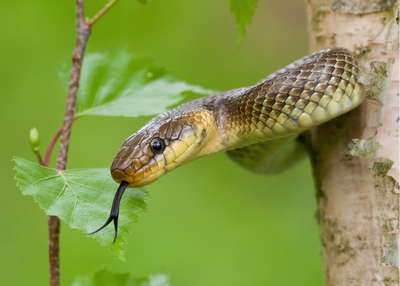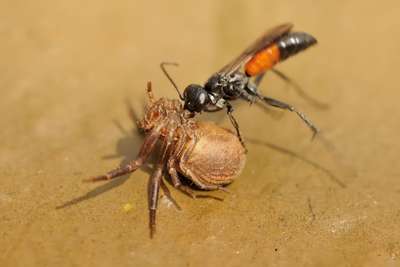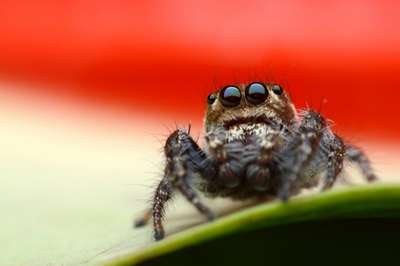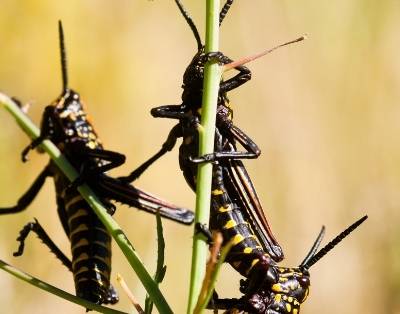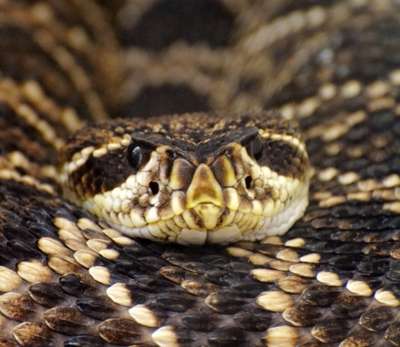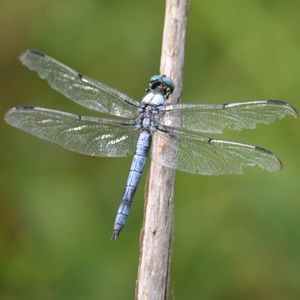Turtles are popular and instantly recognizable reptiles, and the United States boasts species from seven out of the twelve turtle Families. Turtles have lived on earth in some form for about 200 million years and can be found living on land, in the ocean and in freshwater habitats.
Turtles inhabit rivers around the world, although most semi-aquatic turtles prefer slower moving freshwater habitats such as ponds and lakes. One species that prefers rivers with moderate current is the River Cooter turtle (Pseudemys concinna), found in the Piedmont area of North Carolina.
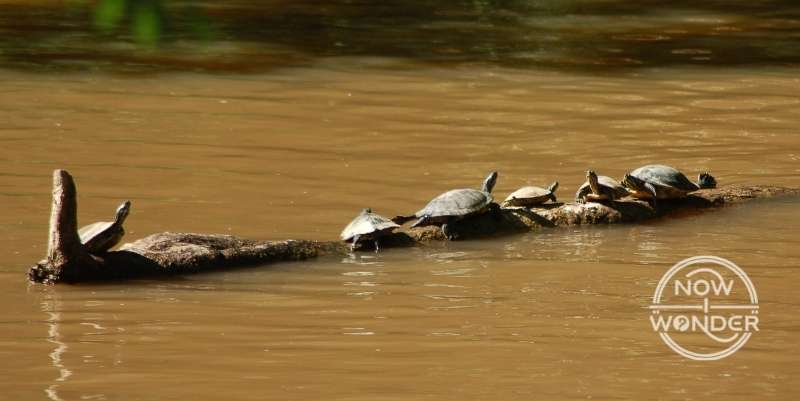
This post explores some of the freshwater turtles species found in the southeastern United States, with a focus on one of the most commonly observed turtles, the river cooter turtle.
Many turtle species inhabit freshwater environments throughout the southeastern United States. Those classified within family Kinosternidae (the mud and musk turtle family) tend to prefer quiet water like ponds, lakes, bogs, swamps and marshes over rivers and streams.
Turtles classified within in family Emydidae (the pond, marsh, and box turtle family) also inhabit these areas but also live within flowing waterways. For these species, the strength of the current, the amount of aquatic vegetation, and the underlying makeup of the ground beneath the water determines which species will likely inhabit a particular river.
Turtle species that inhabit freshwater environments in the southeastern United States include:
| River Cooter Turtle (Pseudemys concinna) | Pond, Marsh, and Box Turtle Family Emydidae |
| Eastern Mud Turtle (Kinosternon subrubrum) | Mud and Musk Turtle Family Kinosternidae |
| Common Musk Turtle (Sternotherus odoratus) | Mud and Musk Turtle Family Kinosternidae |
| Painted Turtle (Chrysemus picta) | Pond, Marsh, and Box Turtle Family Emydidae |
| Chicken Turtle (Deirochelys reticularia) | Pond, Marsh, and Box Turtle Family Emydidae |
| Common Map Turtle (Graptemys geographica) | Pond, Marsh, and Box Turtle Family Emydidae |
| Red-Eared Slider Turtle (Trachemys scripta) | Pond, Marsh, and Box Turtle Family Emydidae |
| Common Cooter Turtle (Pseudemys floridana) | Pond, Marsh, and Box Turtle Family Emydidae |
| Snapping Turtle (Chelydra serpentina) | Snapping Turtle Family Chelydridae |
| Alligator Snapping Turtle (Macroclemys temmincki) | Snapping Turtle Family Chelydridae |
What kind of turtle is the river cooter?
The river cooter (Pseudemys concinna) is a turtle species classified with family Emydidae, which includes the pond, marsh, and box turtles. It is a large turtle, native to the central and eastern United States, and is one of the most aquatic species within this Family.
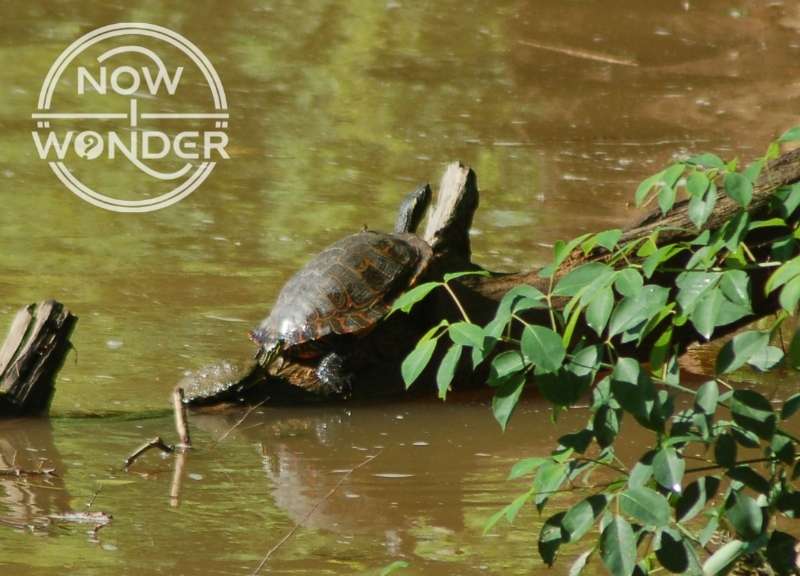
What do river cooter turtles look like?
River cooters are large turtles (up to 16 in or 15.24 cm) with dark, low-profile shells, webbed and clawed feet, and yellow lines running the length of their bodies and legs. Their plastrons (the underside of the shell) are yellow and lined along the scute seams with brown, which fades with age.
What can river cooter turtles be mistaken for?
River cooter turtles can be mistaken for sliders and painted turtles as these species look similar at first glance. Shell appearance varies across individuals within species, separate species are often found in the same location, and all dive under water quickly when approached.
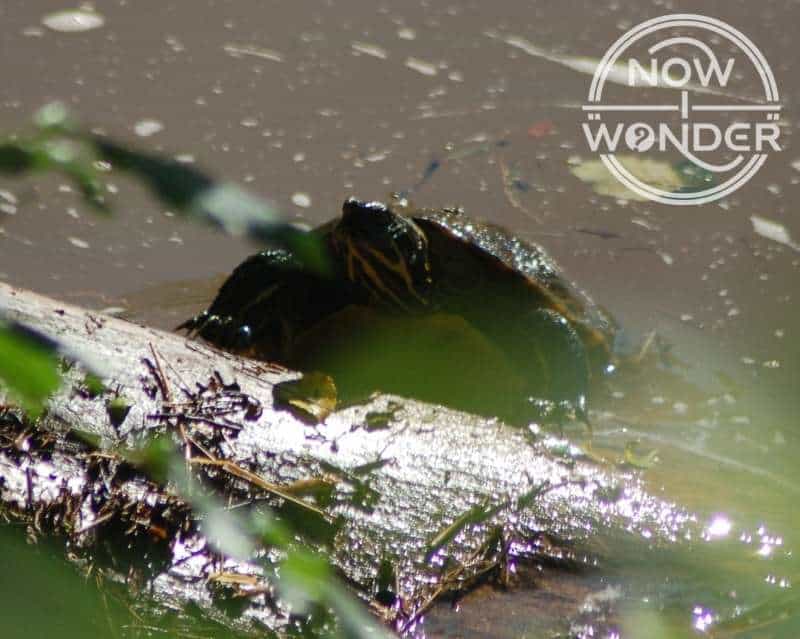
Where do river cooter turtles live?
Eastern river cooters (Pseudemys concinna concinna) inhabit streams, rivers, and lakes from southeast Virginia into Florida, west into New Mexico and north to Illinois. A subspecies called the Texas river cooter (Pseudemys concinna texana) lives in central Texas and east New Mexico south into Mexico.
Can river cooter turtles breathe underwater?
When submerged, turtles in family Emydidae such as river cooters (Pseudemys concinna) can absorb oxygen and excrete carbon dioxide directly through their skin, mouths, and throats. This allows them to remain underwater for long periods of time when foraging and during winter dormancy.
River cooter turtles are reptiles and thus breathe air when their heads are out of water. Their lungs inflate and deflate with the help of limb and head movements since their hard shells can’t expand or contract (Aspinall and Capello 2020).
But river cooters, like many turtles species, evolved “bimodal respiration”, meaning they can also respire through different body structures when submerged for long periods of time.
The turtle species that can accomplish this feat of underwater breathing are classified within one of two suborders: Cryptodira and Pleurodira. The two suborders differ in the body structure through which aquatic respiration occurs.
Turtles in suborder Pleurodira exchange oxygen and carbon dioxide through specially enlarged bursae located in their cloacas (the cloaca is the area at the end of a turtle’s colon into which both the urinary and digestive systems empty).
Turtles in suborder Cryptodira, like the river cooter turtle, use their skin, mouths, and throats for respiration while underwater. (Fielder 2012).

What do river cooter turtles eat?
Unlike many other freshwater turtles, river cooters (Pseudemys concinna) are specialized feeders that eat plants almost exclusively.They forage for filamentous algae and plants that grow underwater in the rivers in which they live and eat on very small amounts of insects, mollusks, and fish.
Being a specialized feeder like the river cooter turtle is an interesting mix of advantages and disadvantages.
An advantage to specializing in eating algae is that it is a reliable food source. Algae is abundant in healthy river ecosystems and it can’t escape being eaten. In contrast, turtles that eat an omnivorous diet face a smaller food supply in general (animals are less plentiful than plants) and must expend more energy capturing their animal prey compared to eating plants as the prey can try to escape.
Most turtles are generalized omnivores, eating the most abundant and easily obtained food in their habitats at any given time. For example, red-eared sliders (Trachemys scripta) are aquatic turtles sometimes seen in the same habitats as river cooters and eat fish and plant matter in roughly equal proportions, along with small amounts of insects and mollusks (McCoy et al. 2020). Therefore red-eared sliders are not as dependent on the availability of algae to survive.
A disadvantage in specializing in one type of food makes river cooter turtles vulnerable to changes in their habitats that negatively impact their algal food supply. If a river becomes polluted or the water dries up due to a prolonged drought, river cooters can’t pivot to a different food source.
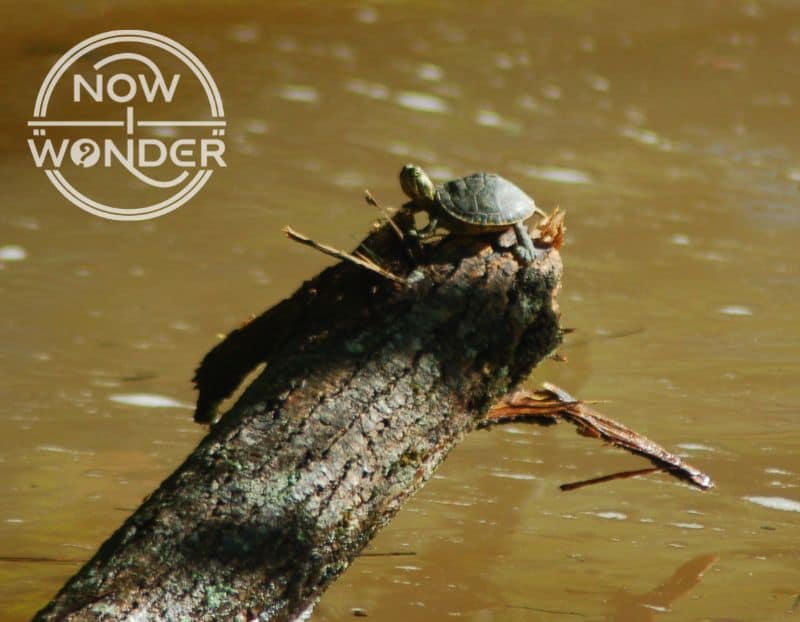
However, in practice, these risks do not seem to be harming the river cooter turtle population. According to the United States Fish and Wildlife Service, they are not listed as either threatened or endangered and have not been proposed for listing.
River cooter turtles depend on a healthy river ecosystem to thrive and the ongoing threats of habitat destruction and climate change can pressure the species over time; a large population now does not guarantee a large population later. But for the moment, at least, river cooters are relatively easy to find in the wild.
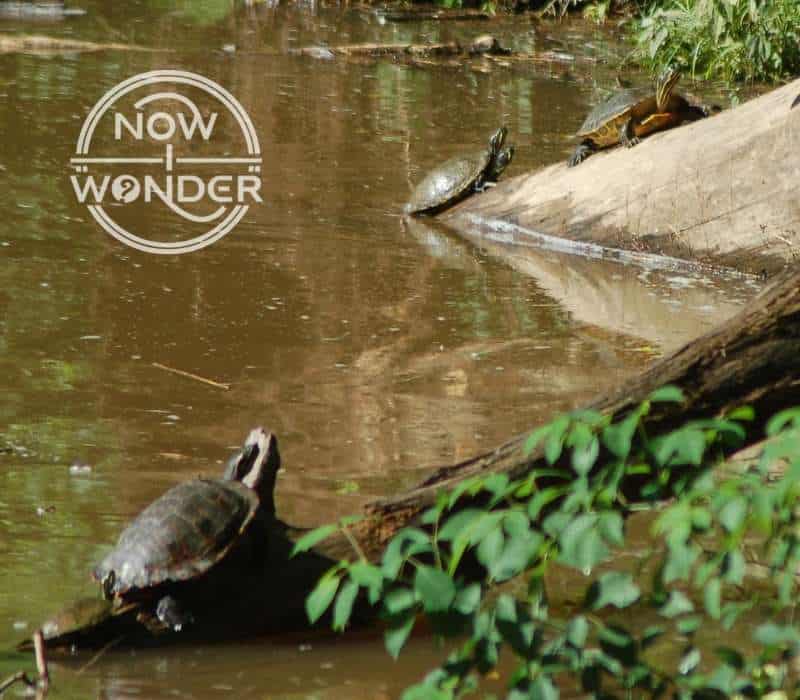
Those who live in or visit the wild spaces of the southeastern United States are lucky enough to be able to spot long lines of river cooter turtles stacked along logs in sun-drenched rivers when the conditions are right. They may vanish beneath the river surface in the blink of an eye but the moment is still thrilling. May it always be so.
Related Now I Wonder Posts
To learn more about terrestrial and freshwater turtles, check out these other Now I Wonder posts:
- Eastern Box Turtle FAQs
- Are Eastern Box Turtles rare?
- River Cooter Turtles: Almost a research enigma
To learn more about turtles in general, check out these other Now I Wonder posts:
- Can turtles swim?
- How do turtles swim with shells?
- Why do turtles float?
- Why does cold water kill sea turtles?
References
Aspinall V, Capello M. 2020. Introduction to Animal and Veterinary Anatomy and Physiology: Tortoises, terrapins and turtles. 4th ed. CABI.
Bagatto BP, Henry RP. 1999. Aerial and aquatic respiration in the snapping turtle, chelydra serpentina. J Herpetol. 33(3):490. Available at: https://scholar.google.com/scholar?hl=en&as_sdt=0%2C34&q=Aerial+and+aquatic+respiration+in+the+snapping+turtle%2C+chelydra+serpentina&btnG=
Fielder DP. 2012. Seasonal and diel dive performance and behavioral ecology of the bimodally respiring freshwater turtle myuchelys bellii of eastern Australia. Journal of Comparative Physiology. 198(2):129-43. Available at: https://scholar.google.com/scholar?hl=en&as_sdt=0%2C34&q=Seasonal+and+diel+dive+performance+and+behavioral+ecology+of+the+bimodally+respiring+freshwater+turtle+myuchelys+bellii+of+eastern+australia&btnG=
Johnston GR, Lau A, Kornilev YV. 2011. Composition of a turtle assemblage in a northern Florida blackwater stream. Fla Sci. 74(2):126-33. Available at: https://scholar.google.com/scholar?hl=en&as_sdt=0%2C34&q=Composition+of+a+turtle+assemblage+in+a+norther+Florida+blackwater+stream&btnG=
Lindeman, Peter V. Resource use of Five Sympatric Turtle Species: Effects of Competition, Phylogeny, and Morphology. Canadian Journal of Zoology 78, no. 6 (06, 2000): 992-1008. Available at: https://scholar.google.com/scholar?hl=en&as_sdt=0%2C34&q=Resource+use+of+Five+Sympatric+Turtle+Species%3A+Effects+of+Competition%2C+Phylogeny%2C+and+Morphology&btnG=
McCoy CJ, Flores-Villela O, Vogt RC, Pappas M, J KM. 2020. Ecology of riverine turtle communities in the southern united states: Food resource use and trophic niche dimensions. Chelonian Conservation and Biology. 19(2):197-208. Available at: https://scholar.google.com/scholar?hl=en&as_sdt=0%2C34&q=Ecology+of+riverine+turtle+communities+in+the+southern+united+states%3A+Food+resource+use+and+trophic+niche+dimensions&btnG=

